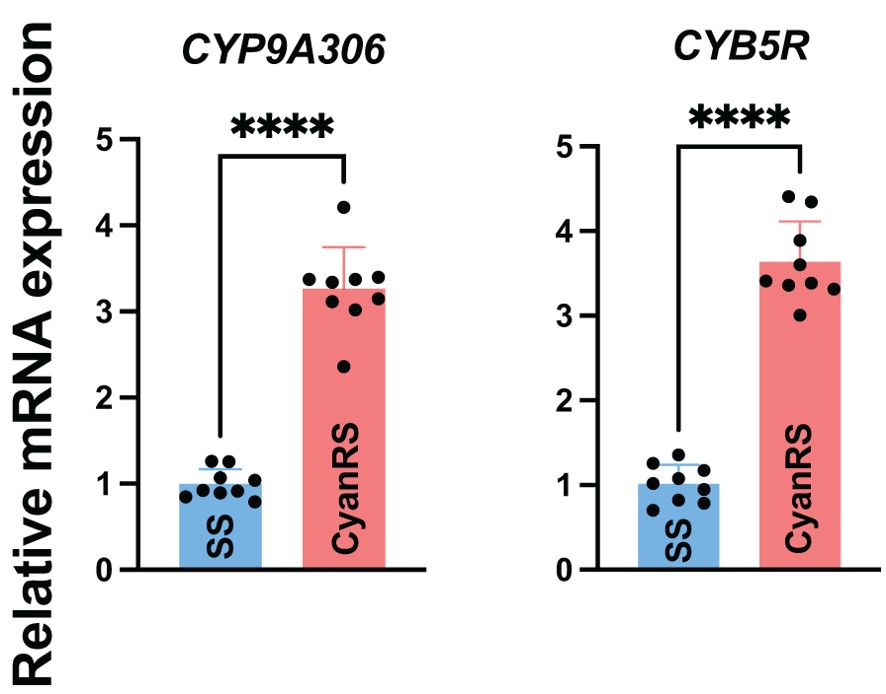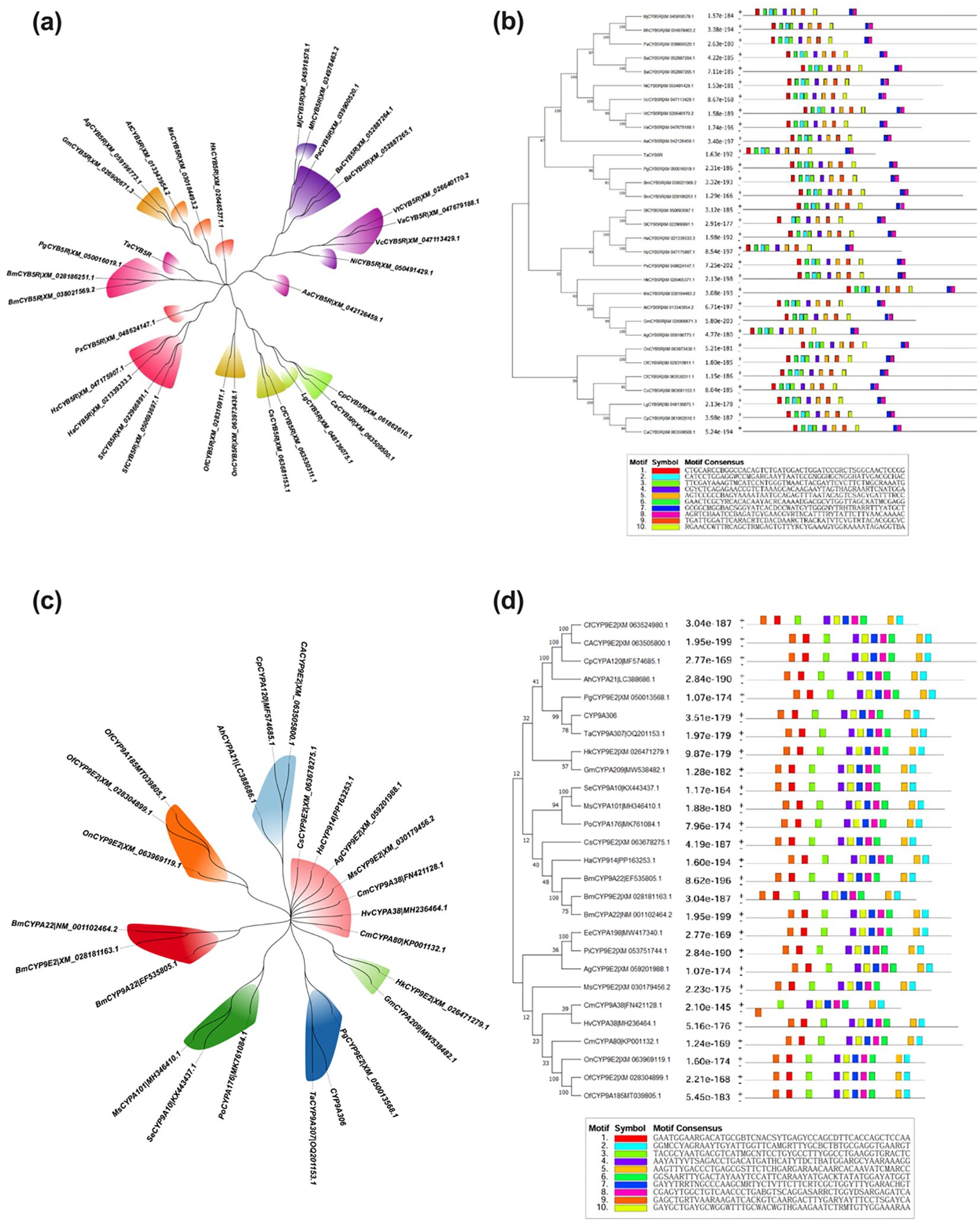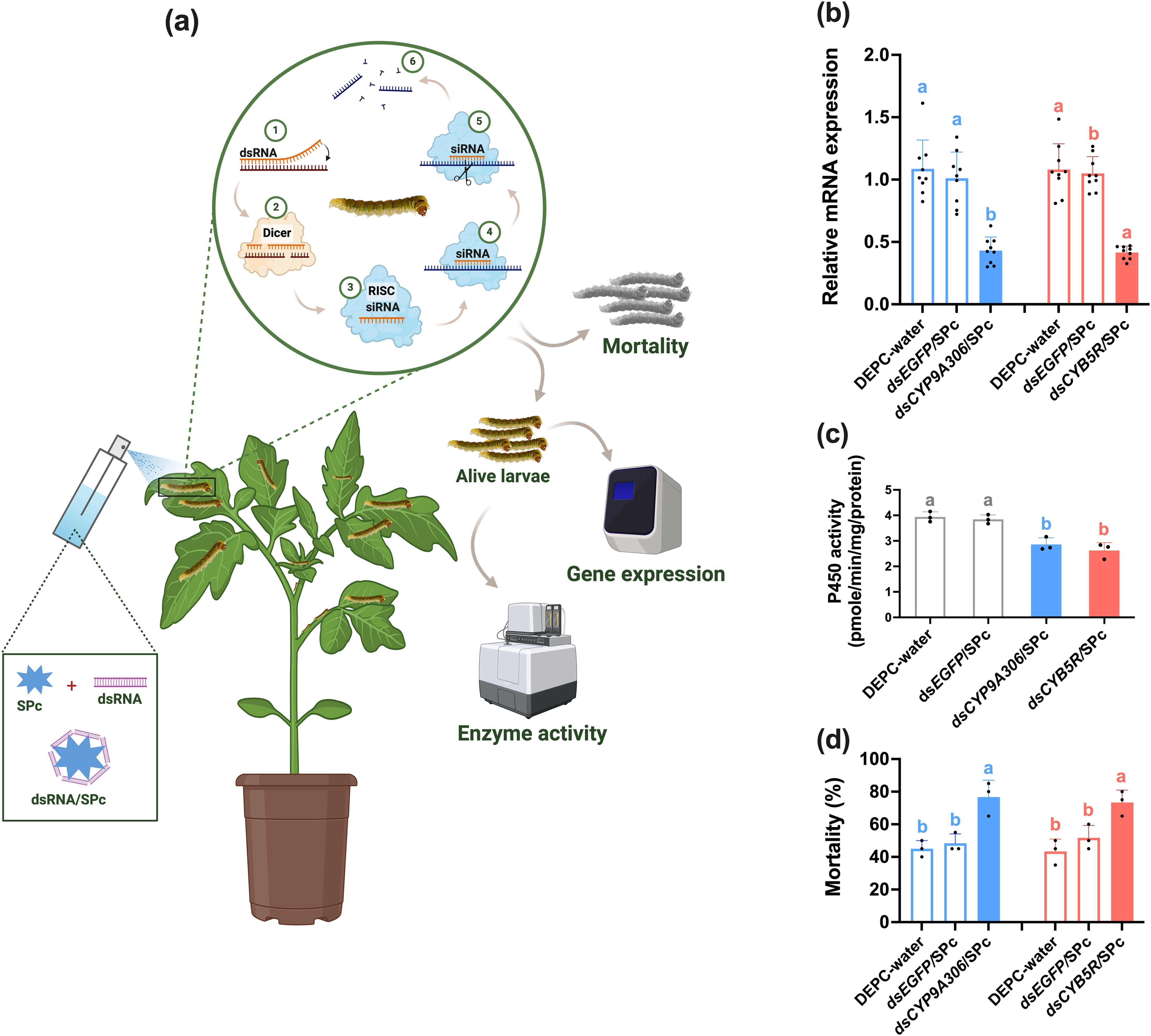- 1State Key Laboratory for Quality and Safety of Agro-Products, Key Laboratory of Biotechnology in Plant Protection of MOA of China and Zhejiang Province, Institute of Plant Protection and Microbiology, Zhejiang Academy of Agricultural Sciences, Hangzhou, China
- 2Protection Division, ICAR-National Rice Research Institute, Cuttack, Odisha, India
- 3MARA Key Laboratory of Surveillance and Management for Plant Quarantine Pests, College of Plant Protection, China Agricultural University, Beijing, China
- 4Université Côte d’Azur, INRAE, CNRS, UMR ISA, Nice, France
A Corrigendum on
Nanocarrier-mediated RNAi of CYP9E2 and CYB5R enhance susceptibility of invasive tomato pest, Tuta absoluta to cyantraniliprole
By Ullah F, G G-P-P, Gul H, Panda RM, Murtaza G, Zhang Z, Huang J, Li X, Desneux N and Lu Y (2025). Front. Plant Sci. 16:1573634. doi: 10.3389/fpls.2025.1573634
In the published article, there was an error in the article title. Instead of “Nanocarrier-mediated RNAi of CYP9E2 and CYB5R enhance susceptibility of invasive tomato pest, Tuta absoluta to cyantraniliprole”, it should be “Nanocarrier-mediated RNAi of CYP9A306 and CYB5R enhances susceptibility of invasive tomato pest, Tuta absoluta to cyantraniliprole”.
In the published article, there was an error. Throughout the manuscript, the gene name “CYP9E2, CYP92, and CYP9E22” are wrong. All these three names should be replaced by the correct name “CYP9A306”. Also, the word “dsCYP9E2/SPc” should be revised as “dsCYP9A306/SPc”.
In the published article, there was an error in Table 1 as published. In Table 1, the gene name “CYP9E2” is wrong. It should be replaced by the correct name “CYP9A306”. Also, the word “dsCYP9E2/SPc” should be revised as “ dsCYP9A306/SPc. The corrected Table 1 and its caption “Table 1. Primer sequences used for RT-qPCR and dsRNA synthesis” appears below.
In the published article, there was an error in Figure 2 as published. In Figure 2, the gene name “CYP9E2” is wrong. It should be replaced by the correct name “CYP9A306”. The corrected Figure 2 and its caption “Figure 2: Relative expression levels of CYP9A306 and CYB5R genes in cyantraniliprole-resistant (CyanRS) and susceptible (SS) strains of Tuta absoluta. Data presented as mean ± SE of the three independent biological replicates. The asterisks **** show significant differences at P < 0.0001, based on Student’s t-test.” appear below.

Figure 2. Relative expression levels of CYP9A306 and CYB5R genes in cyantraniliprole-resistant (CyanRS) and susceptible (SS) strains of Tuta absoluta. Data presented as mean ± SE of the three independent biological replicates. The asterisks **** show significant differences at P < 0.0001, based on Student’s t-test.
In the published article, there was an error in Figure 3 as published. In Figure 3, the gene name “CYP9E2” is wrong. It should be replaced by the correct name “CYP9A306”. The corrected Figure 2 and its caption “Figure 3: Phylogenetic and motif analysis of the CYB5R (a, b) and CYP9A306 (c, d) in lepidopteran insect species.” appear below.

Figure 3. Phylogenetic and motif analysis of the CYB5R (a, b) and CYP9A306 (c, d) in lepidopteran insect species.
In the published article, there was an error in Figure 4 as published. In Figure 4, the gene name “CYP9E2” is wrong. It should be replaced by the correct name “CYP9A306”. Also, the word “dsCYP9E2/SPc” should be revised as “dsCYP9A306/SPc”. The corrected Figure 4 and its caption “Figure 4: Nanocarrier-mediated RNAi of CYP9A306 and CYB5R genes increase the sensitivity of the cyantraniliprole-resistant strain (CyanRS) of Tuta absoluta against cyantraniliprole. (a) Schematic diagram of nanocarrier-mediated RNA inference. (b) Relative mRNA expression level of CYP9A306 and CYB5R genes in CyanRS and SS populations of Tuta absoluta. Data presented as mean ± SE of the three independent biological replicates. (c) The activity of cytochrome P450 enzyme among CyanRS and SS populations of Tuta absoluta. (d) Mortality rates (%) of cyantraniliprole-resistant strain of Tuta absoluta at 48 h of feeding on dsCYP9A306/SPc, dsCYB5R/SPc, dsEGFP/SPc and DEPC water after exposure to the LC50 of cyantraniliprole. Different lowercase letters represent significant differences at P<0.001 level (one-way analysis of variance (ANOVA) with Tukey’s post hoc test.” appear below.

Figure 4. Nanocarrier-mediated RNAi of CYP9A306 and CYB5R genes increase the sensitivity of the cyantraniliprole-resistant strain (CyanRS) of Tuta absoluta against cyantraniliprole. (a) Schematic diagram of nanocarrier-mediated RNA inference. (b) Relative mRNA expression level of CYP9A306 and CYB5R genes in CyanRS and SS populations of Tuta absoluta. Data presented as mean ± SE of the three independent biological replicates. (c) The activity of cytochrome P450 enzyme among CyanRS and SS populations of Tuta absoluta. (d) Mortality rates (%) of cyantraniliprole-resistant strain of Tuta absoluta at 48 h of feeding on dsCYP9A306/SPc, dsCYB5R/SPc, dsEGFP/SPc and DEPC water after exposure to the LC50 of cyantraniliprole. Different lowercase letters represent significant differences at P<0.001 level (one-way analysis of variance (ANOVA) with Tukey’s post hoc test.
In the published article, there was an error in Supplementary Table 1. The gene name “CYP9E2” is wrong. It should be replaced by the correct name “CYP9A306”.
The authors apologize for these errors and state that this does not change the scientific conclusions of the article in any way. The original article has been updated.
Publisher’s note
All claims expressed in this article are solely those of the authors and do not necessarily represent those of their affiliated organizations, or those of the publisher, the editors and the reviewers. Any product that may be evaluated in this article, or claim that may be made by its manufacturer, is not guaranteed or endorsed by the publisher.
Keywords: resistance evolution, RNA interference, biological traits, lepidoptera, gene expression
Citation: Ullah F, G G-P-P, Gul H, Panda RM, Murtaza G, Zhang Z, Huang J, Li X, Desneux N and Lu Y (2025) Corrigendum: Nanocarrier-mediated RNAi of CYP9E2 and CYB5R enhance susceptibility of invasive tomato pest, Tuta absoluta to cyantraniliprole. Front. Plant Sci. 16:1631832. doi: 10.3389/fpls.2025.1631832
Received: 20 May 2025; Accepted: 27 May 2025;
Published: 25 June 2025.
Edited and Reviewed by:
Hafiz Muhammad Usman Aslam, Colorado State University, United StatesCopyright © 2025 Ullah, G, Gul, Panda, Murtaza, Zhang, Huang, Li, Desneux and Lu. This is an open-access article distributed under the terms of the Creative Commons Attribution License (CC BY). The use, distribution or reproduction in other forums is permitted, provided the original author(s) and the copyright owner(s) are credited and that the original publication in this journal is cited, in accordance with accepted academic practice. No use, distribution or reproduction is permitted which does not comply with these terms.
*Correspondence: Yaobin Lu, bHV5YmNuQDE2My5jb20=; Xiaowei Li, bGl4aWFvd2VpMTAwNUAxNjMuY29t
 Farman Ullah
Farman Ullah Guru-Pirasanna-Pandi G
Guru-Pirasanna-Pandi G Hina Gul1
Hina Gul1 Ghulam Murtaza
Ghulam Murtaza Zhijun Zhang
Zhijun Zhang Jun Huang
Jun Huang Xiaowei Li
Xiaowei Li Nicolas Desneux
Nicolas Desneux Yaobin Lu
Yaobin Lu